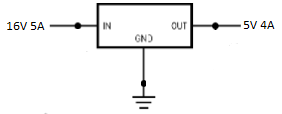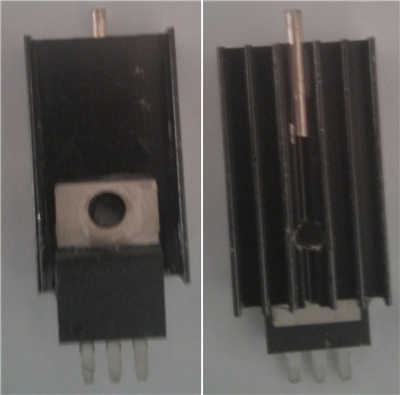hey guys,
I'm using a LM1084 5V 5A in a circuit which has a 16V 5A power input.
LM1084 gets heated when my 4A load is connected to it.
I'm not sure how much temperature it generates in my LM1084, but it gets too hot to be touched.
When I read the data sheet, it says that LM1084 can be heated up to 125 Celsius.
I'm already using a 3cm * 1cm heat sink. (Used heat sink compound as well).
I was wondering if my heat sink is too small to handle the heat generated by the LM1084?
Circuit diagram is attached



